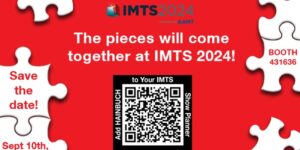WHEN FAILURE IS UNACCEPTABLE
Not Your Grandfather’s Process: The latest automated shot peening systems from Innovative Peening Systems boast a robust design that is integrated with smart, powerful motion control components from Siemens Industry to yield high-performance at an economical price.
Posted: July 7, 2011
Not Your Grandfather’s Process: The latest automated shot peening systems boast a robust design that is integrated with smart, powerful motion control components to yield high-performance at an economical price.
When it comes to parts like airplane wings or engine blades, failure is unacceptable. To reduce the possibility of metal fatigue, manufacturers use a technique called shot peening, in which a hail of 0.014 in steel balls creates microscopic dents in surfaces of metal parts, strengthening the material and extending its lifetime.
The process was once performed manually, but now in companies like Innovative Peening Systems Inc. (IPS; Norcross, GA), shot peening is fully automated. IPS combines its proprietary Intelligent Motion Control (IMC) software with motion control technology from Siemens Industry, Inc. (Alpharetta, GA) to create reliable, high-performance machines at an economical price.
At first, surface deformation might seem more likely to reduce material strength than enhance it. In reality, the rounded dents generated by shot peening convert tensile stresses, which tend to compromise material integrity, into compressive stresses that act to hold the material together. The shot peening effect extends into the material roughly three times the depth of the dents.
Most automated peening machines leverage computer numerical controlled (CNC) technology that is designed for high-precision applications like milling and diamond turning. CNC really offers performance somewhat beyond what is necessary in this (essentially) high-tech sandblasting operation. The design team at IPS, working with Siemens, realized that by using alternative intelligent motion, it could produce a shot peening machine that would perform just as effectively . . . and far more economically.
In a shot peening machine, a reservoir introduces steel shot into a compressed-air stream that passes through a nozzle to strike the part. The process takes place inside an enclosure that protects both operator and machine, but only to a point. A typical machine contains about 2,000 lb of shot, which amounts to hundreds of millions of particles flying around at high velocity.
The potential for damage to components exposed to the shot makes the punishment inflicted by caustic washdown seem mild. “The 0.014 in shot is the perfect size to make its way inside the seal of any kind of moving part and lock it up,” explains Nick Hart, an electrical engineer at IPS. “Metal shot will get inside anything it can and short it out electrically.”
The IPS team realized early in the process that the solution was to pull the motion control elements outside of the enclosure. The resulting six-axis nozzle manipulator consists of a three-axis (X,Y,Z) gantry that rides above the machine and drives a rigid arm tipped with a nozzle. That arm extends into the enclosure through a single hole with a carefully designed seal. Everything else is protected.
The X,Y,Z motion of the gantry essentially provides coarse positioning for the arm. To ensure that the stream of shot strikes even conformal surfaces at normal incidence, the nozzle itself provides two additional degrees of freedom: rotation about the X-axis (the A-axis) and the Y-axis (the B-axis). The actuators for the A-axis and B-axis are sealed inside the solid housing of the arm; the motors and drives remain outside of the enclosure. The final, sixth degree of freedom lies in an axis that rotates the part itself (the C-axis).
Rather than redesigning each machine from scratch, IPS started with a standard motion platform, adjusting the enclosure for a particular project. In the case of large parts like 100 ft long airplane wings, for example, it might gang together multiple nozzle manipulators. “We used standardized components that have been proven in the industry, but we customize every enclosure to fit the customer’s product,” notes company president Dan Dickey. “They get a machine that fits their part at a good price, but it’s not a new invention for us every time we build a machine.”
The specifications called for the nozzle manipulator to move at a maximum speed of 500 ipm. On the face of it, such a requirement is more demanding than challenging. The problem is inertia. Fully charged with shot, the assembly weighs around 2000 lb. It requires a lot of muscle to accurately position that much mass at 500 ipm.
The solution to this problem was to combine Sinamics S120 drives in Booksize format and servomotors from the 1FK7 family. Although the S120 drives feature onboard memory and processing power, the IPS team chose to use them in a centralized control architecture, partly because the components were already grouped together on the nozzle manipulator carriage and partly to provide additional protection from contamination.
If Sinamics supplies the muscle, Simotion provides the brains in the form of the D435 drive-based controller. “This allows us the flexibility to create custom software [IMC] for the shot peening application, whereas some of the alternatives in the industry do not give you a lot of freedom,” says Hart. The milling and turning applications typically performed by a CNC machine are inherently rotational, while shot peening is raster-based with a different coordinate system. As a result, engineers using CNC technology for shot peening must write additional code to adapt the system.
Motion control with the Simotion D435 enabled the IPS team to develop its shot peening software directly, simplifying engineering and enhancing performance. “In some of the other applications, you are trying to take a product that was designed for a milling machine and teach it how to run a shot peening machine,” Hart says. “This time, we just designed a shot peening machine from the ground up.”
The Simotion system stores parameters on a removable memory card that can be swapped out to instantly update software. The controller also offers trapezoidal motion profiles, compensating for the inertia of the nozzle manipulator at high speed by providing controlled acceleration and deceleration. This approach improves performance while reducing motor wear and, consequently, points of failure.
Of course, the most common source of failure is cabling. Connecting the components with a Siemens Drive-CLiQ helped create a reliable solution. An Ethernet backplane based on a 100 Mb/s serial interface, Drive-CLiQ automatically captures nameplate data and validates components, speeding device integration. In the harsh shot peening environment, Drive-CLiQ offers other benefits. Manually terminating cables requires closing up open connectors on the factory floor, always a risk for contamination. Drive-CLiQ connectors are pre-sealed at the factory, which speeds commissioning and gives engineers one less problem to worry about.
In addition to meeting the speed spec, the shot peening system positions to 0.001 in, repeatable to within 0.005 in. The company has multiple machines deployed. “The first machine has 18 months in the field,” states Hart. “I just talked to the customer and they say the machine is repeatable, accurate and reliable. They have no complaints.” That is impressive, considering the machine is operating 16 hours a day, five days per week. The others are running around the clock, five days per week, with no problems thus far.
Innovative Peening Systems Inc., 2825 Simpson Circle, Norcross, GA 30071, 770-246-9883, Fax: 770-246-9860, info@innovativepeening.com, www.innovativepeening.com.
Siemens Industry, Inc. Drive Technologies – Motion Control (Production Machines), 390 Kent Avenue, Elk Grove Village, IL 60007, 847-640-1595, Fax: 847-437-0784, SiemensMTBUMarcom.sea@siemens.com, www.usa.siemens.com/MotionControl.



